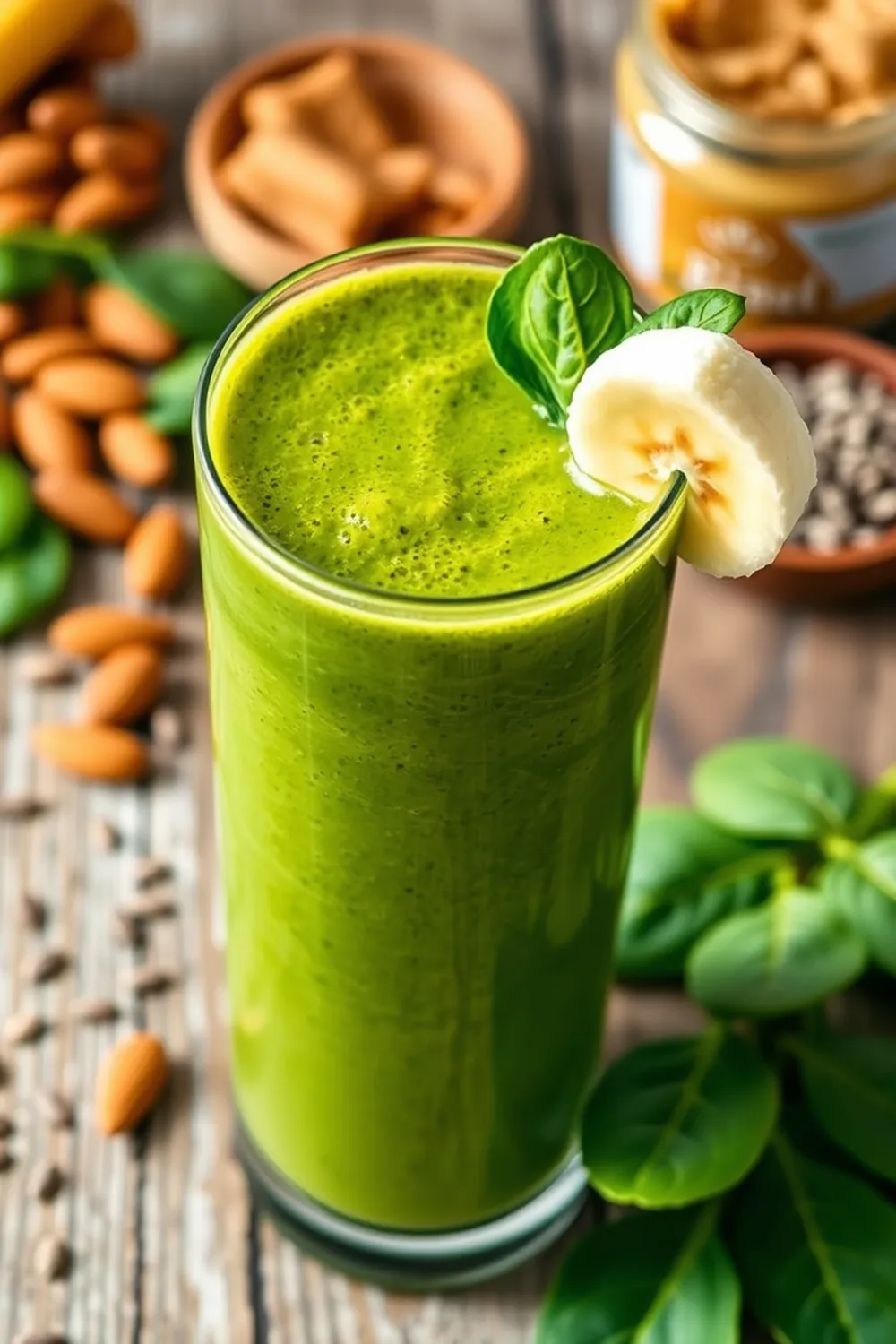- Wash idli rice thoroughly and soak in water for 7-8 hours.
- Soak urad dal and fenugreek seeds (methi seeds) separately in water for 7-8 hours.
- Drain soaked idli rice and blend into a smooth paste using minimal water.
- Transfer rice batter to a large fermentation container.
- Drain urad dal and fenugreek seeds (methi seeds), then blend into a smooth paste with minimal water.
- Combine urad dal mixture with rice batter and mix thoroughly.
- Cover container tightly and let ferment for 8-10 hours in a warm place.
- After fermentation, divide batter into portions for immediate use and storage.
- Add salt to the portion intended for idlis and mix well before steaming.
- Store remaining batter in refrigerator for up to 3-4 days for dosas/uttapams.
- Calories:340 kcal25%
- Energy:1422 kJ22%
- Protein:8 g28%
- Carbohydrates:35 mg40%
- Sugar:1 mg8%
- Salt:250 g25%
- Fat:2.5 g20%
Last Updated on 4 months by Neha Deshmukh
Authentic Idli Rice & Urad Dal Recipe – South Indian Breakfast
Hey everyone! If you’ve ever dreamt of waking up to the fluffy, cloud-like goodness of homemade idlis, you’re in the right place. This recipe is a little bit of a project, I won’t lie, but trust me – the reward is so worth it. I remember the first time I successfully made idli batter from scratch; it felt like a real accomplishment! Now, it’s a weekend staple in my house. Let’s dive in and learn how to make this classic South Indian breakfast.
Why You’ll Love This Recipe
This isn’t just a recipe; it’s a gateway to a delicious and healthy tradition. Idlis are incredibly versatile – perfect with sambar, chutney, or even a simple podi. They’re light, easily digestible, and a fantastic way to start your day. Plus, making your own batter means you control the ingredients and can adjust it to your liking.
Ingredients
Here’s what you’ll need to create this magic:
- 2 cups idli rice or boiled rice (approximately 300g)
- 1 cup urad dal (split black gram or whole black gram) (approximately 150g)
- 1 cup cooked rice (approximately 180g)
- 0.5 teaspoon fenugreek seeds (methi seeds) (approximately 2g)
- Salt to taste
Ingredient Notes
Let’s talk ingredients! A few little things can make a big difference.
- Idli Rice Varieties: You can use regular idli rice, or boiled rice. Boiled rice gives a slightly softer idli. I sometimes mix both for a nice texture!
- Urad Dal Options: Split vs. Whole: Both split (urad dal) and whole (whole black gram) work well. Split urad dal is more commonly used and ferments faster. I usually go with split, just for convenience.
- The Importance of Fenugreek Seeds (Methi): Don’t skip the methi seeds! They aid in fermentation and give the idlis a lovely, subtle flavor. A little goes a long way, though.
- Regional Variations in Rice & Dal Ratios: While this is a classic 2:1 rice to dal ratio, some families prefer a 3:1 or even a 4:1 ratio. Feel free to experiment once you’re comfortable with the basic recipe.
Step-By-Step Instructions
Alright, let’s get cooking! This takes time, mostly for soaking and fermenting, but the actual work isn’t too bad.
- First, wash the idli rice thoroughly under running water. Then, soak it in plenty of water for 7-8 hours.
- In a separate bowl, soak the urad dal and fenugreek seeds together in water for the same amount of time – 7-8 hours.
- Once the rice is soaked, drain it and blend it into a smooth paste using minimal water. You want it to be a little thick, not watery.
- Transfer the rice batter to a large fermentation container. This needs to be big enough to accommodate the batter as it rises!
- Now, drain the urad dal and methi seeds. Blend them into a smooth paste, again using as little water as possible.
- Add the cooked rice to the urad dal mixture and blend again until everything is beautifully smooth.
- Pour the urad dal mixture into the container with the rice batter. Mix everything together really well with your hand – this is the best way to ensure it’s properly combined.
- Cover the container tightly and let it ferment for 8-10 hours in a warm place. I usually leave mine overnight.
- After fermentation, the batter will have risen and become light and airy. Divide it into portions – some for immediate use, and the rest for storage.
- Add salt to the portion you’re using right away and mix well before steaming your idlis.
Expert Tips
A few little secrets to help you along the way:
- Achieving the Perfect Fermentation: Warmth is key! In colder months, you can preheat your oven to the lowest setting, turn it off, and place the batter inside.
- Blending Techniques for Smooth Batter: Using minimal water is crucial. A slightly coarse batter is okay, but avoid adding too much water, or your idlis will be dense.
- Troubleshooting Common Issues: If your batter isn’t fermenting, it might be too cold. Try moving it to a warmer spot or using the oven trick.
Variations
Want to switch things up? Here are a few ideas:
- Vegan Idli: This recipe is naturally vegan! Just double-check your salt doesn’t contain any hidden animal products.
- Gluten-Free Idli: Idli is naturally gluten-free, making it a great option for those with sensitivities.
- Spice Level Adjustments (Adding Green Chilies): My friend loves adding a couple of finely chopped green chilies to the batter for a little kick.
- Festival Adaptations (Ganesh Chaturthi, etc.): During festivals, some families add a pinch of turmeric to the batter for a vibrant color.
Serving Suggestions
Idlis are best served hot with:
- Sambar (a lentil-based vegetable stew)
- Coconut chutney
- Tomato chutney
- Podi (a dry spice mix)
Storage Instructions
You can store the remaining batter in the refrigerator for up to 3-4 days. It will continue to ferment slowly, so the flavor will become tangier over time. It’s perfect for making dosas or uttapams!
FAQs
Let’s answer some common questions:
- What is the ideal consistency of the idli batter? It should be thick enough to coat the back of a spoon, but still pourable.
- Can I use a blender instead of a wet grinder? Yes, a blender works, but a wet grinder produces a smoother batter.
- How do I know if the batter has fermented properly? The batter will have doubled in volume and will be light and airy. It will also have a slightly sour smell.
- What can I do if my idli batter doesn’t ferment well? Ensure it’s warm enough and that you’ve used good quality ingredients.
- Can I freeze idli batter? While not ideal, you can freeze it for up to a month. Thaw it completely before using.
- What is the purpose of adding cooked rice to the batter? Cooked rice adds softness and a slightly different texture to the idlis.
Enjoy making these delicious idlis! I hope this recipe brings a little bit of South Indian sunshine into your kitchen. Let me know how it turns out in the comments below!









